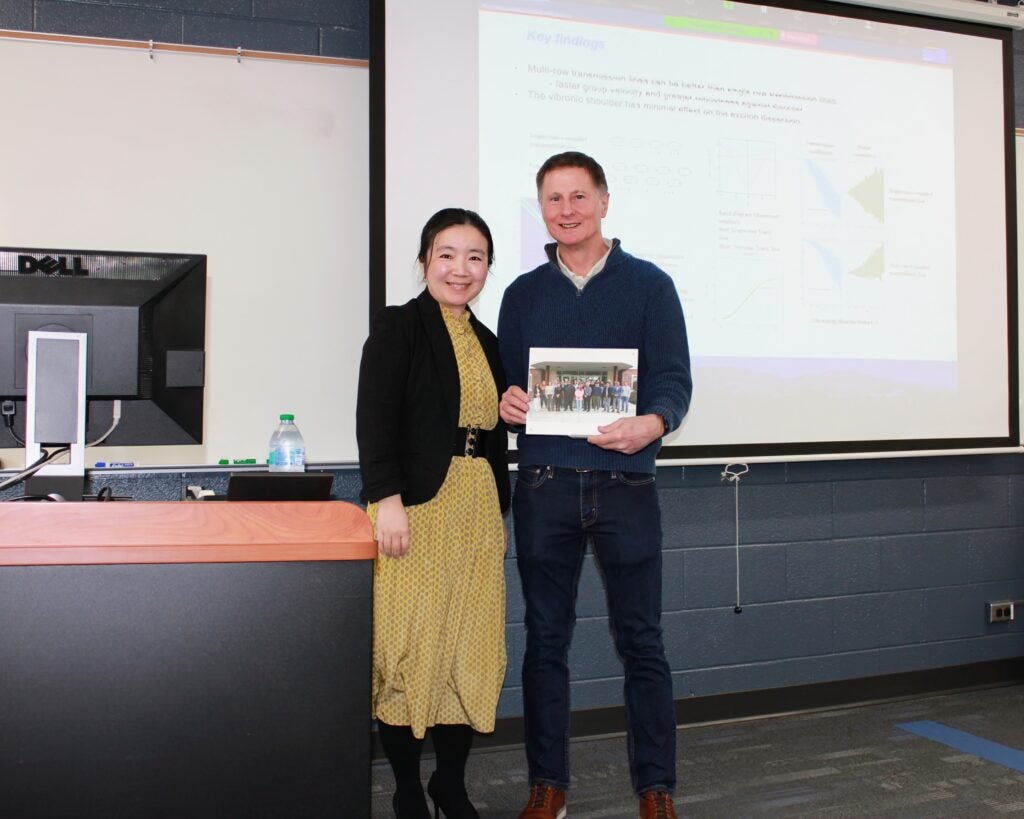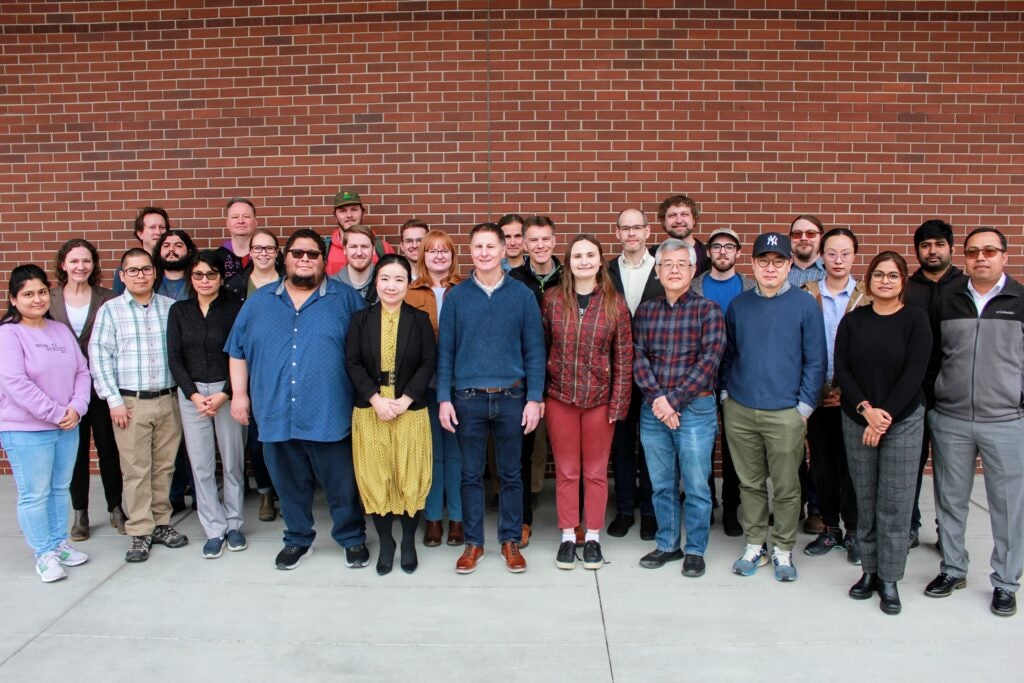The Quantum DNA (qDNA) Research Group successfully hosted its Spring Bi-Annual Symposium on March 12, 2025, at Boulder Hall 200. This symposium served as a dynamic forum for students, researchers, team leads, and the management team to exchange ideas, showcase research progress, and plan for qDNA’s future.
Symposium Highlights
Welcome & Historical Perspective
The day began with opening remarks by Dr. Mandeep Sharma, Research Program Manager, who provided an overview of qDNA’s goals, achievements, and the primary purpose of the spring symposium. This was followed by Dr. Bill Knowlton, Group Lead, who provided a historical perspective on qDNA’s evolution. Bill recognized the achievements of women researchers in the group in honor of International Women’s Day, celebrating their contributions to qDNA’s success. He then discussed the group’s vision, grand challenges, and its long-term research goal of achieving room-temperature molecular quantum computing using organic materials mimicking photosynthetic systems. Finally, he reflected on the group’s funding history, the hiring of key personnel, the development of the group structure, and significant milestones that have shaped qDNA’s growth. To honor Bill’s contributions, Lan Li presented him with a framed qDNA Group picture signed by all the members as a token of appreciation.
Additionally, as Jen Edwards, the group’s Senior Research Accountant, transitions to a new job, the group took the opportunity to recognize her invaluable contributions. Lan presented a parting gift to Jen on behalf of qDNA in appreciation of her dedication and support.

Lightning Round Team Presentations
Team leads provided 20-minute research presentations covering current projects, key findings, challenges, and future directions:
• Olya Mass (Dye Synthesis)
• Jeunghoon Lee (DNA Construct Synthesis)
• Ryan Pensack (Ultrafast Laser Spectroscopy)
• Keitel Cervantes-Salguero (Single Molecule Characterization)
• Lan Li (Simulation)
• Bernard Yurke (Theory)
Each team’s presentation sparked insightful discussions and highlighted potential areas for collaboration within qDNA.
Gallery
At the Spring qDNA Symposium, the lightning round team presentations highlighted that the qDNA Group is nearing groundbreaking milestones in excitonics. The Ultrafast Laser Team is close to determining whether DNA-templated dye aggregates can exhibit time-dependent exciton delocalization, a crucial step for using excitonic transport in quantum information processing. Concurrently, the Dye Synthesis Team is developing dye aggregate transmission lines that could support ballistic excitonic transport, reducing energy loss and enabling highly efficient molecular-scale circuits. These advancements position qDNA as a leader in quantum materials research, with significant potential for future quantum information science applications.
Lunch & Networking
Lunch was provided, and attendees enjoyed the opportunity to engage in conversations and strengthen professional connections.
Strategic Planning & Future Outlook
A PI-only session, coordinated by Dr. Lan Li, focused on the next steps for qDNA’s research and funding strategy. Discussions included future funding directions, collaboration opportunities, and plans for long-term sustainability.
Closing Remarks & Next Steps
Bill and Lan wrapped up the symposium with a summary of key takeaways and action items to guide the next phase of qDNA’s transition.
Looking Ahead
The Spring Symposium reinforced qDNA’s commitment to innovation, collaboration, and strategic growth. Moving forward, the group will continue to focus on enhancing interdisciplinary research, securing new funding opportunities, and ensuring a smooth leadership transition.

A huge thank you to everyone who contributed to the success of this event! We look forward to building on the momentum and seeing these discussions translate into impactful research and collaborations.
Stay connected for upcoming initiatives, seminars, and collaborative opportunities!